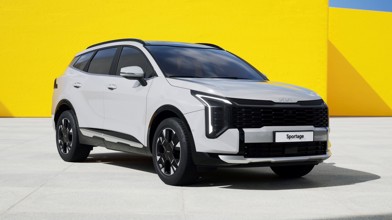Autonomous vehicles are a hot topic in the automotive industry. Companies and governments are thinking about how they can self-driving technology in different ways. Like, maybe, public transport.
CAVForth is an autonomous vehicle project funded by the UK government and started on-road testing for its new autonomous buses recently.
Fully autonomous vehicles are still a wee while away, but projects like this one are laying the groundwork for future services and passenger vehicles to operate safely without a driver.
The test, which will run for two weeks, will see five double-decker busses travelling a 22.5km route. While no passengers are allowed aboard yet, the hope is that the busses will one day soon be used to carry up to 36 passengers, with the capacity for 10,000 passengers a week.
Before the busses were ready to be tested on the road, the project completed a series of depot-based trails, track testing, and virtual simulations.
CAVForth also received input from around 500 members of the public for feedback about how they think the bus should operate.
CAVForth is working with a few transport agencies and companies, such as Stagecoach, Fusion Procession, Transport Scotland, and Alexander Dennis.
Sam Greer, Regional Director for Stagecoach in Scotland, says “this is a major step forward in our journey to fully launch the UK’s first full-sized autonomous bus service and will provide easy access to a brand-new bus route in the heart of East Scotland.”
While the buses are fully autonomous, they will each have at least one member of staff aboard.
Stagecoach will soon start recruiting 20 “Autonomous Bus Professionals” to monitor the autonomous bus systems. A “Captain” will also be recruited to interact with passengers, answer questions, and preview a potential self-driving future.
While the buses will potentially come with driver controls, they will operate at SAE Level 4, which means the system doesn't need the driver to take over.
Fully autonomous vehicles that don't have any controls are still a few years away from mainstream usability, as the technology still has some hurdles to overcome before it’s reliable and safe enough to replace humans in every driving situation.




